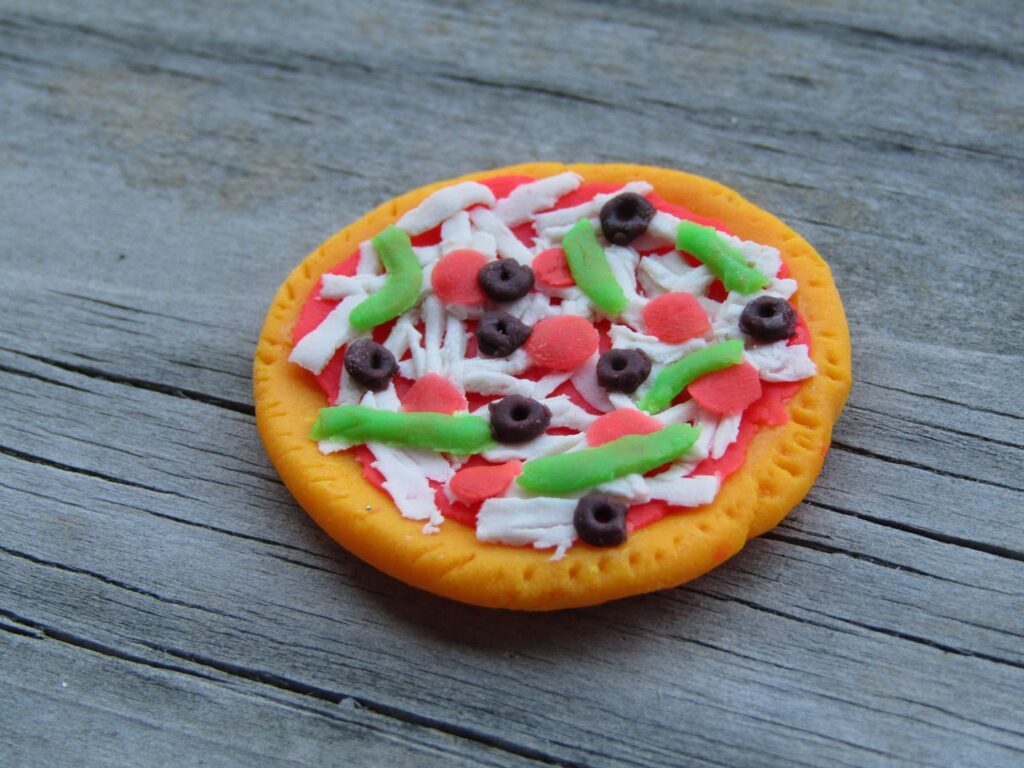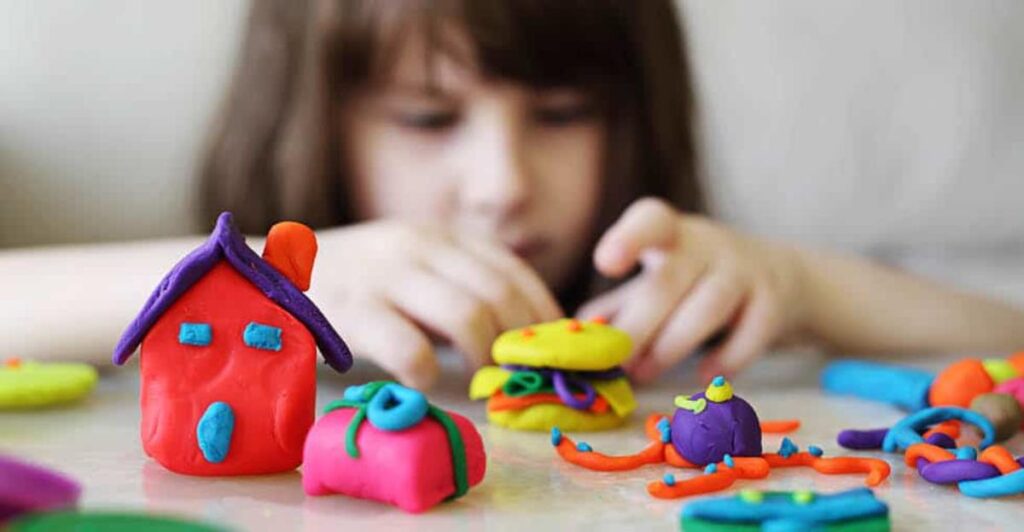How to harden Play doh
Play-doh is used by children worldwide to develop their artistic skills and explore the world of three-dimensional creativity. As children or adults continue to develop their skills using play-doh, they start looking for better methods to improve the production of their work. Basically, this includes painting over them, sculpting them using hand tools, and giving them permanent shapes.
But can play doh be hardened permanently? What is the procedure for hardening play-doh? Is hardened play doh toxic for children? Such questions and more will be uncovered finally in this article today. just like play doh, kids also like to make different things with clay to improve their overall mind creativity and working skills.

What is play doh made up of?
The question as to whether play-doh can be hardened or not can be answered simply by looking at the materials from which play doh is made up. The latest look at the materials that make up this cool toy and sculpting material.
Flour
According to some sources, 80% of all Play-Doh is made up of wheat. Along with wheat, the usual component is water. The wheat type used is first clear hard winter wheat flour. This kind of flower, as mentioned, is quite hard and very rich in protein.
Common salt
Quite starting to sound like the recipe of bread, sodium chloride is also used in the creation of Play-Doh.
Sodium borate
Sodium borate, commonly known as borax, is basically used as a pesticide, insect, or microbe destroyer. It is this sodium borate that distinguishes Play-Doh from bread dough.
Aluminum sulfate
Aluminum sulfate helps dough rise. This chemical is responsible for the consistent maintenance of the play-doh structure.
Vanilla fragrance
The strange and impactful fragrance of Play-Doh, which always stays in our memory, actually comes from various ingredients, including primarily the vanilla fragrance.
Other chemicals
Other chemicals included in Play-Doh are potassium dihydrogen phosphate, sodium benzoate, waxy maize starch C-Gel 04230, mineral oil, and calcium chloride.
Why should you harden Play-Doh?
Why should you try to make your play-doh structure hard? There are actually some very interesting takes on why Play-Doh should or should not be made hard.
Preserve the creation of children
What can be better than preserving the memories made by your children for ages to come? Many of us wish we had those souvenirs that we actually enjoyed playing with or creating as a child. How happy would your children be when they grew older of having memories from a time that no longer exists with people who are now gone?
Making ornaments and sculptures for business
Play-doh culturing and ornamenting is a legitimate medium for small businesses today. If you are a budding artist, then this is probably why you want to preserve your Play-Doh. A play doh ornament given great finishing can often fetch you a lot of money, as it indeed is a unique design made by you.
Using it as a medium of art
Just like for a business, you can also use Play-Doh as a medium for creating art. Great art is often created from everyday items, and the new generations encourage this holistic art-making process. Use Play-Doh to create art out of inexpensive materials and simultaneously stand out from other artists.
Encouraging a new hobby for your child
Children are likelier to continue a certain hobby if it is rightfully expressed and encouraged. If you display your child’s creations around the house early, they are more likely to take their hobbies seriously and pursue them into adulthood.
Pros
Preserve your creation
The most lucrative reason which compels artists and youngsters to Harden their Play-Doh is to preserve the creation that they were able to make. If you have made something that you cannot tolerate getting destroyed, the best option is to have it preserved.
Make painting and detailing easier.
Painting and detailing Play-Doh sculpture is much easier when it is hard. You can even use many tools to enhance the painting process by elevating your Play-Doh structure.
Additional artwork possible
Additional artwork that adds texture to your Play-Doh structure is only possible after it has hardened. You can even apply varnishes over your paint to improve the finishing of your Play-Doh structure once it is hard.
Cons
Play-doh can no longer be reused.
Most children and practicing sculpture makers are used to reusing the same Play-Doh repeatedly. Making your sculpture hard means you are instead using it as a sculpting material, and you can never reuse it even if you no longer want that sculpture.
The hardening process needs adult supervision.
Children should not be allowed to make their sculptures hard without proper adult supervision. This is due to the nature of the process, which we will discuss in the next section.
Hard and play-doh sculpting is complex.
The entire process of sculpting a blade sculpture and making it hard is not only expensive but can also make the usage of Play-Doh quite complex. This can cause many youngsters to drop out of this fun hobby.

How can we Harden Play-Doh?
Now that we have talked so much about what play doh is made up of and how we can make our play-doh hard and permanent – there must be some actual way to do it, right?
If you want to harden your Play-Doh temporarily, you should just put it in the freezer. This is great for the youngest children as this process is not toxic. However, when taken out of the freezer, it will start de-crystalizing.
To permanently dry and Harden your play-doh sculpture or ornament, you can bake it for 30 minutes in the oven like air dry clay. The amount of time is directly proportional to the thickness and complexity of your creation. Alternatively, you can also air dry your Play-Doh, especially if the sculpture or ornament is too thin.
The air dry method saves your young children from any kind of fumes and is also a pretty nontoxic method. You can always apply the correct varnish or sealant on your Play-Doh to give it an additional finishing and safety from the external environment.
The air dry method usually takes around 2 to 3 days and can even take longer. This method ensures no cracking or shrinking of your Play-Doh structure.
Conclusion
Your play-doh is not dulling in color and texture because you are hardening it; it is dulling simply as a response to the heating process. Often it can also end up in a powdery texture for your Play-Doh. You can save your structure from this fate by using the correct varnish during the hardening process. and some kids also like to color the craft in the end just like coloring air dry clay to make them look more vibrant and stunning.

FAQ
How is Play-doh different from plasticine?
Play-Doh is a water-based creative toy, while plasticine, at the same time, is an oil-based one. This means, in simpler terms, play-doh has a mole environment-friendly and kid-friendly formula. It also means that play-doh does not follow the same process of creation and hardening as plasticine.
How long does playdoh take to Harden?
For an average-sized ornament and sculpture made out of Play-Doh, it should take roughly 30 minutes in the oven for the entire play doh structure to Harden. However, if you choose to air dry the Play-Doh structure, it can easily take up to 4 days to give you the consistency that you want.
Can you make professional sculptures from Play-Doh?
Yes, it is possible to make professional sculptures out of play-doh, and many notable artists use this unique medium to create their creations.
Should you use a microwave oven to Harden Play-Doh?
Using the microwave oven for hardening Play-Doh is not the best idea. The microwave oven heating gives way to more shrinking and cracking than a usual oven.

Being associated with art and craft field since decades as a hobbyist and life long learner has given me an opportunity to learn many new things related to art, craft, paints and pottery which i am trying to share with your guys on this website. I have expertise of being professional painter and potter for the last 20+ years
I have learned mind blowing cool tips and insights which makes me a person with ability to improvise and come up with creative ideas and solutions to make stunning and impeccable art pieces of all types which are adored by people across the globe on this website and other platform.


